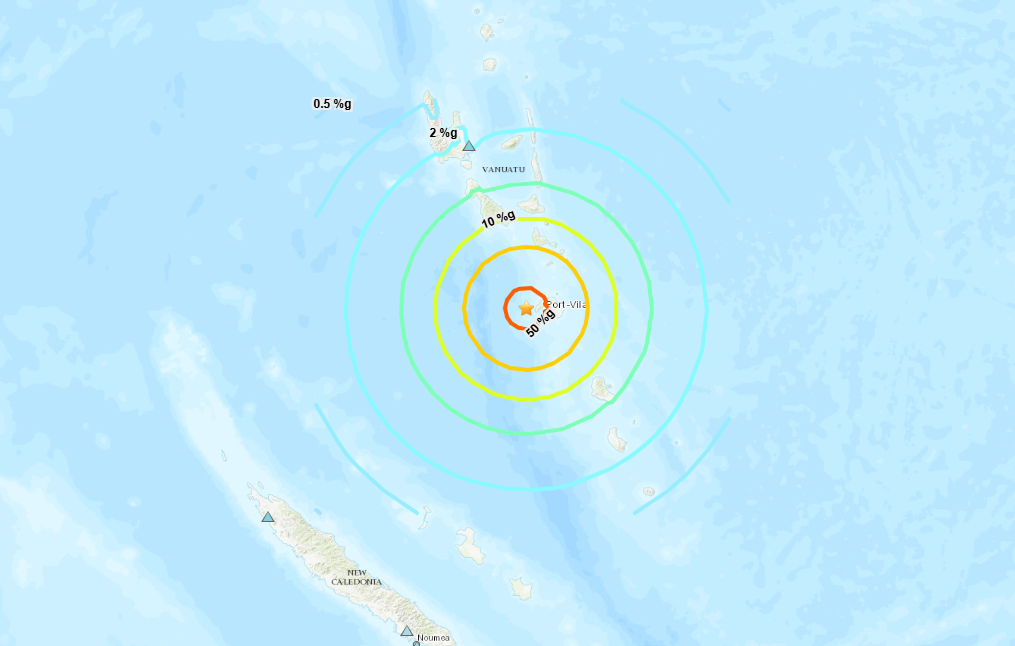A 7.3 magnitude earthquake struck off the coast of Vanuatu, a South Pacific island nation, triggering a tsunami warning that was later lifted. The quake, centered 18 miles west of Port Vila, the nation’s capital, occurred at a depth of 35 miles and was followed by a 5.5 magnitude aftershock and numerous tremors throughout the day. While the tsunami threat subsided, the earthquake left a trail of destruction and disruption in its wake. Communication lines, including phone networks and government websites, went down, hindering immediate assessments of the damage and casualties. Early reports emerging through social media and sporadic phone calls hinted at potential casualties and significant structural damage. The full extent of the impact remains unclear as authorities struggle to re-establish communication and assess the situation.
Vanuatu, an archipelago of 80 islands, is home to approximately 330,000 people. The nation’s vulnerability to seismic activity stems from its location on a subduction zone, where the Indo-Australian Plate slides beneath the Pacific Plate. While buildings in Vanuatu are typically designed to withstand some degree of seismic activity, the magnitude of this earthquake raised concerns about the extent of the damage. The immediate aftermath saw residents advised to avoid coastal areas until tsunami and earthquake monitoring systems were fully restored. The focus shifted to gathering information and preparing for potential relief efforts as the nation grappled with the earthquake’s impact.
Initial reports painted a concerning picture of the situation on the ground. Video footage from the Vanuatu Broadcasting and Television Corporation showed crowds gathered outside Vila Central Hospital, raising concerns about potential casualties. Difficulties in contacting police, hospitals, and other essential services added to the anxiety. Unverified reports circulated about people trapped in collapsed buildings. Visual evidence of the destruction began to surface through social media, including images and videos depicting damaged buildings, landslides obstructing roads, and scattered debris inside shops. A video seemingly showing collapsed structures in Port Vila, including one that had fallen onto cars, added to the growing evidence of significant damage.
Eyewitness accounts and preliminary assessments provided further insight into the unfolding situation. Journalist Dan McGarry, reporting from Port Vila, relayed information from a police officer outside Vila Central Hospital about one confirmed death and observed three individuals on gurneys in distress. McGarry described doctors working tirelessly at a triage center outside the emergency ward. He highlighted Vanuatu’s limited capacity to handle a mass casualty event and expressed concerns about the impact of a “massive landslide” at the international shipping terminal and damage to the airport runway, both of which could impede recovery efforts. While acknowledging the severity of the event, McGarry noted that, in his 21 years in Vanuatu, this was the most serious earthquake he had experienced.
International organizations and neighboring countries expressed concern and pledged support. Katie Greenwood, the Fiji-based head of the Asia-Pacific regional office for the Red Cross, voiced concerns about the potential for casualties in Port Vila, given the concentration of large buildings and hotels in the downtown area. Australian Foreign Minister Penny Wong reassured Vanuatu of Australia’s support, emphasizing the close relationship between the two countries. New Zealand Foreign Minister Winston Peters expressed concern for the 45 registered New Zealanders in Vanuatu and pledged assistance. These early responses underscored the regional and international concern for Vanuatu and the willingness to provide aid in the aftermath of the disaster.
As communication channels are gradually restored, a clearer picture of the damage and casualty figures is expected to emerge. The immediate priorities include assessing the structural integrity of buildings, providing medical assistance to the injured, and ensuring the availability of essential supplies. The impact on critical infrastructure, such as the port and airport, will also need to be evaluated to facilitate recovery efforts. International aid organizations and neighboring countries are poised to offer assistance, with the extent of support determined by the specific needs identified in the ongoing assessments. The long-term recovery process will likely involve rebuilding damaged infrastructure, providing support to affected communities, and strengthening disaster preparedness measures to mitigate the impact of future seismic events. The earthquake serves as a reminder of Vanuatu’s vulnerability to natural disasters and the importance of international cooperation in responding to such events.

